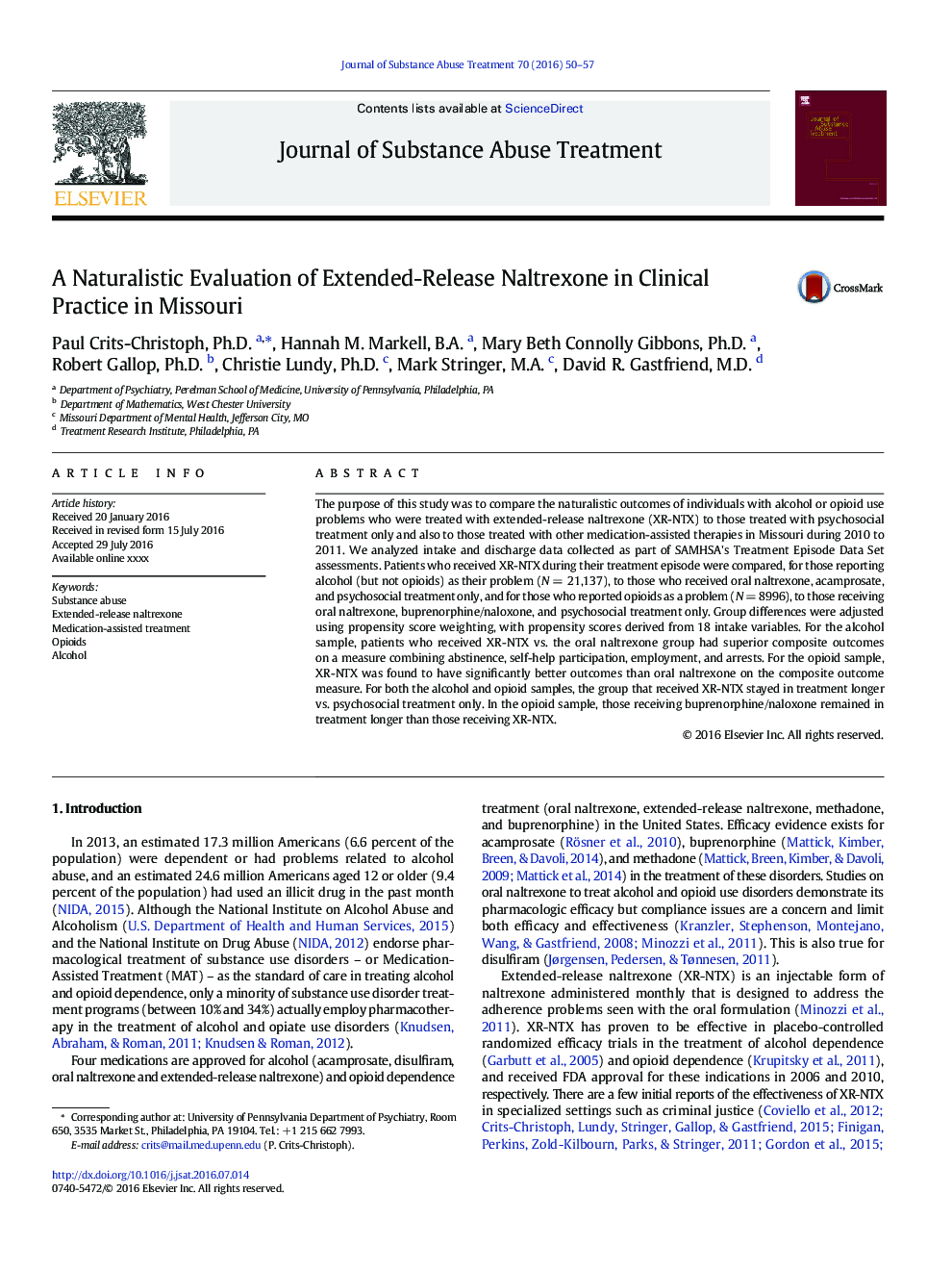| Article ID | Journal | Published Year | Pages | File Type |
|---|---|---|---|---|
| 6802068 | Journal of Substance Abuse Treatment | 2016 | 8 Pages |
Abstract
The purpose of this study was to compare the naturalistic outcomes of individuals with alcohol or opioid use problems who were treated with extended-release naltrexone (XR-NTX) to those treated with psychosocial treatment only and also to those treated with other medication-assisted therapies in Missouri during 2010 to 2011. We analyzed intake and discharge data collected as part of SAMHSA's Treatment Episode Data Set assessments. Patients who received XR-NTX during their treatment episode were compared, for those reporting alcohol (but not opioids) as their problem (NÂ =Â 21,137), to those who received oral naltrexone, acamprosate, and psychosocial treatment only, and for those who reported opioids as a problem (NÂ =Â 8996), to those receiving oral naltrexone, buprenorphine/naloxone, and psychosocial treatment only. Group differences were adjusted using propensity score weighting, with propensity scores derived from 18 intake variables. For the alcohol sample, patients who received XR-NTX vs. the oral naltrexone group had superior composite outcomes on a measure combining abstinence, self-help participation, employment, and arrests. For the opioid sample, XR-NTX was found to have significantly better outcomes than oral naltrexone on the composite outcome measure. For both the alcohol and opioid samples, the group that received XR-NTX stayed in treatment longer vs. psychosocial treatment only. In the opioid sample, those receiving buprenorphine/naloxone remained in treatment longer than those receiving XR-NTX.
Related Topics
Life Sciences
Neuroscience
Biological Psychiatry
Authors
Paul Ph.D., Hannah M. B.A., Mary Beth Connolly Ph.D., Robert Ph.D., Christie Ph.D., Mark M.A., David R. M.D.,
